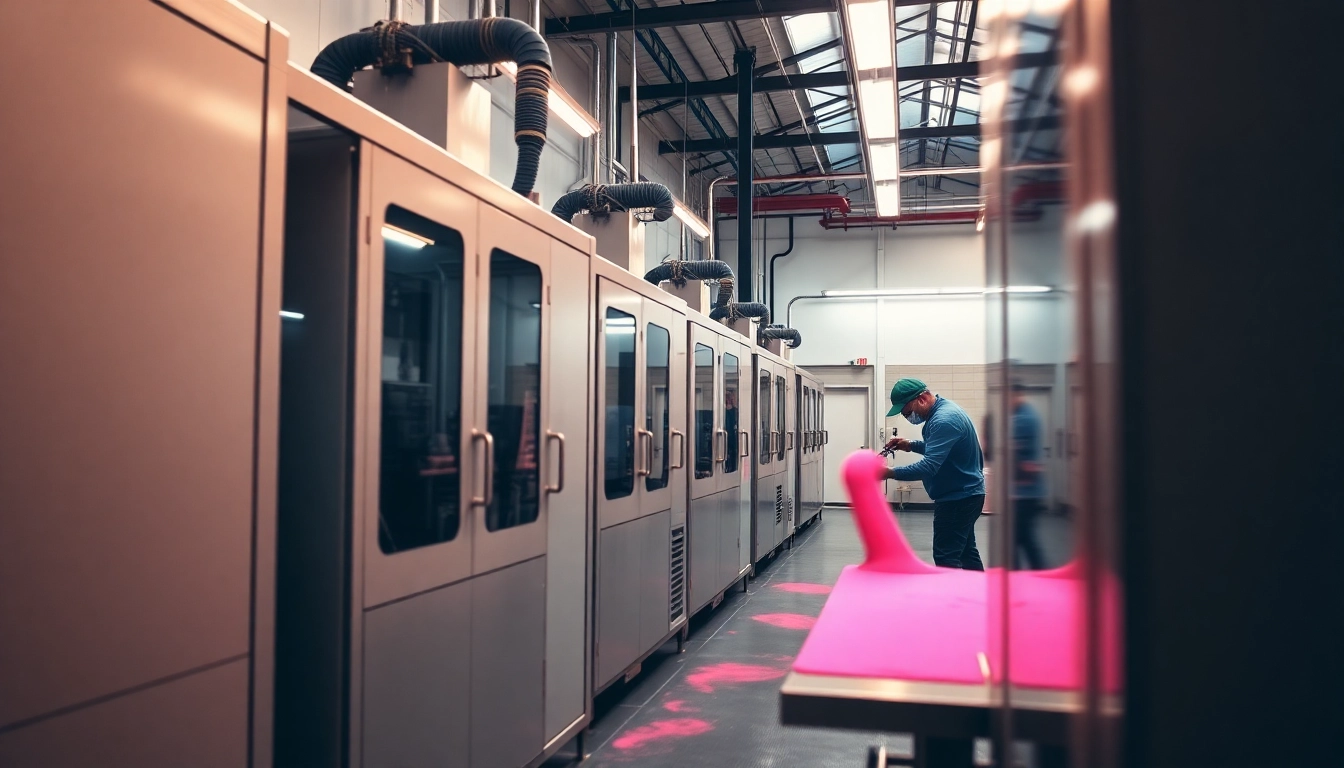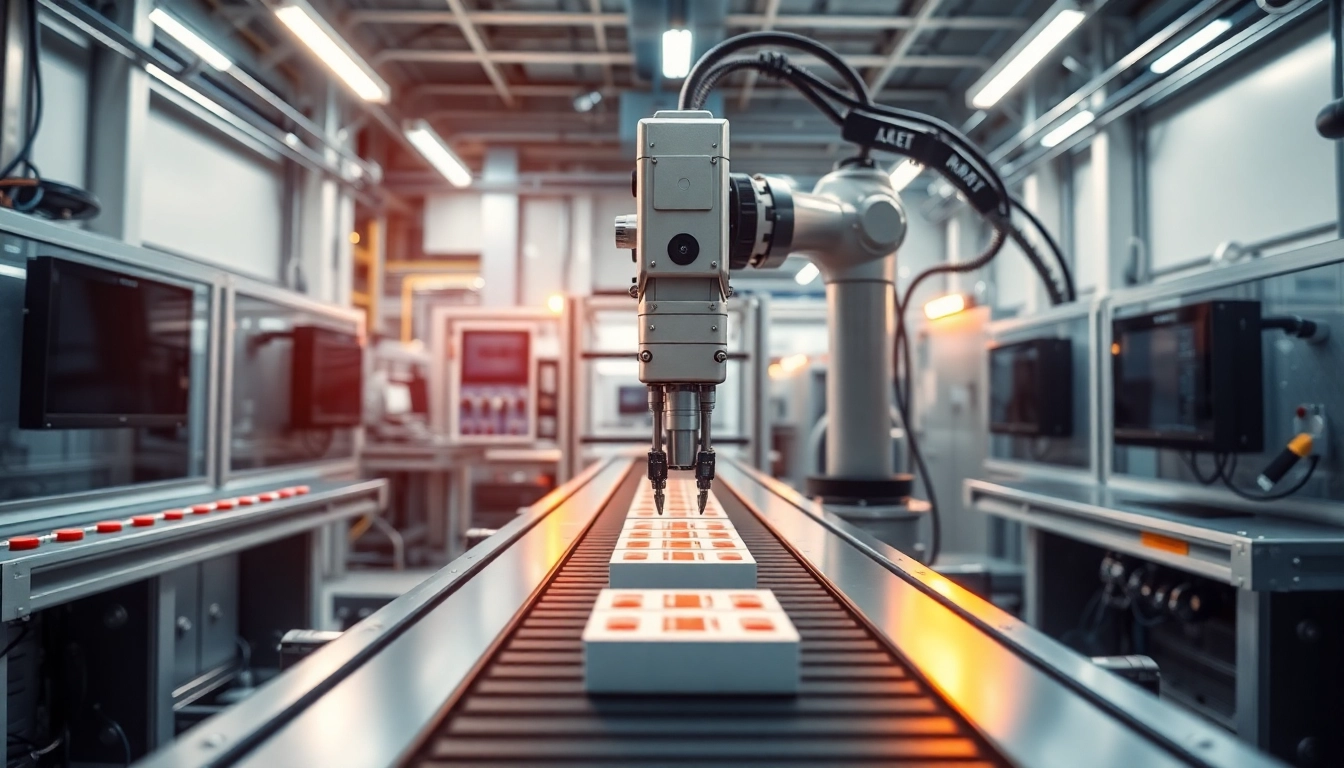Understanding Blow Molding Technology
What is Blow Molding?
Blow molding is a specialized manufacturing process primarily used for producing hollow plastic parts. It involves creating a parison, a tube-like piece of plastic that is then inflated into a mold cavity. The methodology offers numerous advantages, including high production rates and the ability to produce complex shapes. Depending on the requirements, the material used can range from high-density polyethylene (HDPE) to various polyesters. A reliable Blow Molding Machine Supplier ensures that manufacturers have access to the latest technologies and support for optimal production efficiency.
Types of Blow Molding Processes
Blow molding can be classified into several distinct processes, each catering to specific applications and material requirements:
- Extrusion Blow Molding: The most common method, where plastic is melted and extruded into a parison, which is then blown into a mold. This process is ideal for producing bottles, containers, and similar items.
- Injection Blow Molding: This method combines injection molding and blow molding, allowing for precise control over the part dimensions and wall thickness. It’s perfect for making small, intricate products like medical bottles.
- Stretch Blow Molding: Often used for making PET bottles, this technique involves stretching the parison before blowing, enhancing the material’s strength and clarity.
Applications of Blow Molding Machines
Blow molding is widely utilized across various industries, providing solutions to diverse applications. The flexibility and efficiency of the process make it suitable for producing:
- Consumer products such as sports bottles, containers, and packaging components.
- Industrial parts like tanks and tanks for chemicals or gases.
- Aerospace components, owing to the lightweight properties of blow-molded plastics.
- Automotive parts including fuel tanks and various interior components.
Choosing the Right Blow Molding Machine Supplier
Key Factors to Consider
When selecting a blow molding machine supplier, various factors play a crucial role in ensuring the equipment aligns with your business needs:
- Reputation: Research the supplier’s market position and customer feedback to ascertain reliability and service quality.
- Technology and Innovation: Ensure the supplier integrates cutting-edge technology in their machines, promoting energy efficiency and reduced operational costs.
- Customization Capabilities: Depending on your production needs, check if the supplier can offer customized solutions that cater to specific product designs.
Evaluating Supplier Credentials
An effective vetting process for potential suppliers should include a thorough analysis of their credentials. Consider the following:
- ISO certification or adherence to industry standards, which indicates a commitment to quality and excellence.
- Experience in the blow molding market and proven track records with similar applications.
- Client testimonials or case studies that demonstrate the supplier’s capability in handling various projects.
Importance of Customer Support and Service
Reliable customer support is vital for maintaining production efficiency. When selecting a supplier, consider their availability for technical support, training services, and spare parts supply. A robust after-sales service can significantly reduce downtime, ensuring seamless operations.
Comparative Analysis of Blow Molding Suppliers
Market Leaders and Their Technologies
The blow molding industry features several key players renowned for their innovative technologies. Companies like Uniloy, Parker Plastics, and Jomar Corporation offer diverse machine types suited to different production scales and material properties. Uniloy, for instance, is celebrated for its four unique blow molding technologies, serving various industries with optimized solutions.
Cost vs. Quality: Finding the Balance
Budget constraints often lead manufacturers to prioritize cost over quality. However, high-quality machines from reputable suppliers can yield significant returns by minimizing waste, reducing operational costs, and boosting production efficiency. Evaluate the long-term value of investment against upfront costs when choosing a supplier.
Case Studies from Leading Suppliers
In-depth case studies from leading suppliers offer insights into the practical applications of their machines. For instance, Parker Global utilized its advanced extrusion blow molding technology to enhance productivity in a beverage packaging company, demonstrating the direct impact of technology on operational efficiency. Such case studies can help prospective buyers understand how specific machines perform in real-world scenarios.
Innovations in Blow Molding Machinery
Latest Industry Trends
The blow molding industry is witnessing rapid changes driven by technological advancements. Key trends include:
- Sustainability: As consumer demand for eco-friendly packaging rises, suppliers are innovating to produce machines that can handle recyclable materials.
- Automation: Increasing reliance on automation in blow molding adjusts production speeds and reduces labor costs while enhancing precision.
- Additive Manufacturing: Some companies are exploring 3D printing techniques within blow molding, facilitating rapid prototyping and customized production.
Impact of Automation and Smart Technology
Automation and smart technology significantly enhance operational efficiency. Machines equipped with IoT technology can provide real-time data analytics, enabling proactive maintenance and reduced downtime. Furthermore, machine learning algorithms can optimize production settings, leading to improved output quality and consistency.
Future of Blow Molding: Sustainability and Efficiency
The future of blow molding will increasingly emphasize sustainability and efficiency. The shift towards using biodegradable materials and energy-efficient machines aligns with global sustainability goals. Manufacturers adopting such technologies not only comply with regulations but also appeal to environmentally conscious consumers.
Maximizing Performance with Your Blow Molding Machine
Best Practices for Operation and Maintenance
To maximize the lifespan and performance of blow molding machines, it is essential to implement best practices for operation and maintenance:
- Conduct routine inspections and preventative maintenance on all moving parts.
- Keep machinery clean and free from contaminants that may impact production quality.
- Provide ongoing training for operators to ensure they understand machine functions and safety protocols.
Common Challenges in Blow Molding Production
Blow molding production may encounter challenges such as:
- Mismatched Material Properties: Ensure that all materials used are compatible with the specifications of the blow molding equipment.
- Operational Downtime: Inefficient machine operation can be mitigated by adopting better maintenance schedules and training.
- Quality Control Issues: Implementing stringent quality checks can help in addressing any defects or inconsistencies during the manufacturing process.
Performance Metrics to Track
Tracking specific performance metrics can aid in assessing the productivity and efficiency of blow molding operations. Key metrics include:
- Cycle Time: Measure the time taken for each production cycle to ensure optimal efficiency.
- Yield Rates: Monitoring the percentage of acceptable products versus the total produced can help identify quality issues early.
- Machine Utilization Rates: Understanding machine usage patterns can inform decisions on capacity and scheduling.



